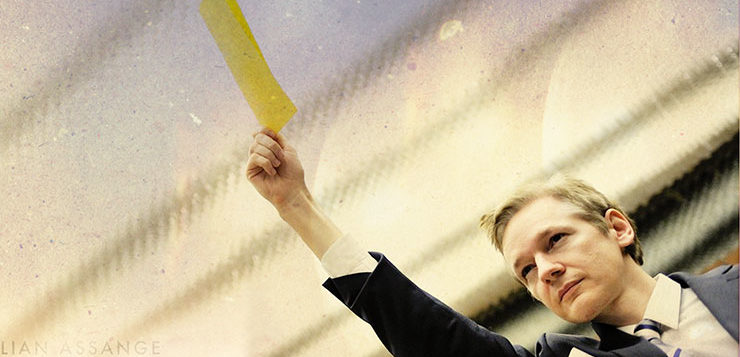In the first part of a special New Matilda investigative series, clinical psychologist Dr Lissa Johnson exposes the ‘science’ behind the hunt for Julian Assange, and the tactics those in power use to keep you in the dark.
Next month rallies will be held in Sydney and Melbourne in defence of Julian Assange. Protesters will call upon the Australian government to uphold its obligations to its citizens and secure freedom for Assange, whose health is failing is in his ninth year of UN-declared arbitrary detention.
Assange faces extradition to the United States and secret charges for his publishing activities should he step outside the Ecuadorian Embassy in London. This cross-border, extraterritorial persecution threatens not only Assange’s health, and possibly his life according to a recent UN statement, but poses grave legal risks both to journalism and dissent.
Among the speakers at the Sydney rally will be renowned journalist and film maker John Pilger, who will address protesters in the Amphitheatre at Martin Place on Sunday, March 3rd, from 2pm. The Melbourne rally will be held at the State Library on Sunday March 10th, from 1pm.
The Australian rallies join a growing international chorus of organisations and individuals sounding increasingly urgent alarms over Julian Assange’s plight, and its implications for freedom of speech and democratic rights.
Late last year, as secret US charges against Julian Assange surfaced, and the threat of his imminent extradition to the US loomed, the United Nations Working Group on Arbitrary Detention (UNWGAD) issued a strongly worded statement to the UK Government, having previously ruled twice that Assange is being arbitrarily detained in the Ecuadorian Embassy in London.
In its statement, the UNWGAD demanded that the UK abide by its “binding” legal obligations and “immediately” secure freedom for Julian Assange. The UN reminded the UK Government that “human rights treaty law is binding law, it is not discretionary law. It is not some passing fancy”.
The same fears prompted 33 EU parliamentarians to write a similarly strongly worded letter to the British Prime Minister, the Ecuadorian President and the UN Secretary General on December 10th, condemning the “very serious and egregious violations of human rights in the heart of Europe.” They called for Assange’s “immediate release, together with his safe passage to a safe country.”
Two German MPs followed with a visit to the Ecuadorian Embassy on December 20th, at which they denounced the violation of Assange’s “fundamental rights” and expressed their “demand that this case has to be solved: that no publisher, no editor, no journalist is detained because of publishing the truth”.
The politicians’ and UN statements added to previous condemnations of Assange’s persecution from Human Rights Watch, Amnesty International, the American Civil Liberties Union, the Committee to Protect Journalists, and a former senior lawyer for the UNHCR and UN Expert on the Promotion of International Order.
All of these leading legal and human rights authorities have been making essentially the same fundamental point: that Julian Assange is being persecuted for publishing truth in the public interest, placing public interest journalism itself at risk, along with freedom of speech and other democratic and human rights principles.
It is the same fundamental point made by several speakers at an earlier Australian rally to free Julian Assange, held in Sydney in June last year. John Pilger spoke at that rally also.
Pilger’s important 2018 speech, however, like the rally itself, was subject to a near total, if not total, mainstream media blackout. So if you missed it, that may be why. And if you haven’t followed the US war on Wikileaks from the outset, as I hadn’t when I attended last year’s rally, Pilger’s speech is a powerful way to bring yourself up to speed.
All in a day’s work
Speaking from the steps of the Sydney Town Hall, John Pilger said, “I know Julian well. I regard him as a close friend: a person of extraordinary resilience and courage. I have watched a tsunami of lies and smear engulf him, endlessly, vindictively, perfidiously, and I know why they smear him.
“In 2008, a plan to destroy both Wikileaks and Julian was laid out in a secret document dated 8th of March 2008. The authors were the Cyber Counter-intelligence Assessment Branch of the US Defense Department.”
The Cyber Counter-intelligence Assessment Branch of the US Defense Department? What’s that?
Is it any relation to the CIA? The same CIA that recently came out openly in front of the US mission to “take down” Wikileaks?
The intelligence branch of the US Defense Department (DoD) is known as the Defense Intelligence Agency, or DIA. The DIA differs from the CIA, according to the DoD website, in that the CIA supplies intelligence to the President and his Cabinet, while the DIA supplies intelligence to “combat related missions”.
In other words, as far back as 2008, it sounds as though the DoD had enlisted its intelligence apparatus in some kind of ‘combat mission’ against Wikileaks and Julian Assange.
What kind of combat mission?
Pilger explained, “They described in detail how important it was to destroy, and I quote, ‘the feeling of trust that is Wikileaks’ centre of gravity’. This would be achieved, they wrote, with threats of exposure and criminal prosecution and an unrelenting assault on reputation.”
An unrelenting assault on reputation? Like the long and unrelenting assault on Julian Assange’s reputation in The Guardian and other mainstream publications, for instance? An assault that has involved some serious blatant fabrications of late, seemingly in collaboration with a US-aligned political operator with a known history of forgery? While government-funded intelligence-media cut-outs such as the Integrity Initiative have worked to smear both Julian Assange and Jeremy Corbyn behind the scenes on social media?
That kind of unrelenting assault?
But what sort of military operation targets a thing as deeply psychological as trust? Is this what they call a psychological operation? Are ‘psyops’ even a thing? If so, does the DIA do them?
‘Yes’ appears to be the short answer, based on this 125-page Military PSYOPS document issued by the Joint Chiefs of Staff (JCOS). The JCOS define psychological operations as “planned operations… to influence the emotions, motives, objective reasoning, and ultimately the behaviour” of target audiences.
Like destroying the trust at a publisher’s centre of gravity perhaps.
So who might the DoD engage to influence the emotions, motives, reasoning and behaviour of it targets? Psychologists? That would make sense, given that psychological operations are psychological. Influencing emotions, reasoning and behaviour is our area of expertise, after all.
It would be disturbing, though, to think that psychologists had anything to do with aiding and abetting the UN-declared arbitrary detention of a journalist for publishing. Let alone contributing to his torture, as defined by the UN, via effective solitary confinement since March last year, without access to adequate medical care, possibly endangering his life according to the UNWGAD.
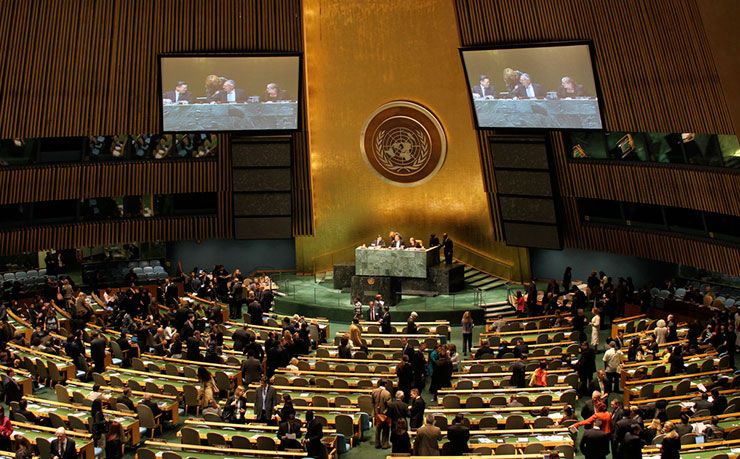
The fact that psychological bodies have remained silent about such a thing, rather than taking a logical stand beside leading human rights organisations, is bad enough. But never fear. A friendly chat on the American Psychological Association (APA) website reveals that, in reality, CIA psychologists differ little from their more pedestrian counterparts. They provide mental health care, assessment and screening for intelligence personnel facing challenging and demanding roles.
Phew. And fair enough. Espionage must be stressful. CIA operatives would need therapy as much as the next person.
But there are other, more intriguing opportunities for psychologists at the CIA. According to the Careers section of the CIA website, the agency also seeks PhD psychologists who can advise on the “practical application of professional knowledge and experience to exciting real-world situations”.
Exciting real-world situations? Like what?
The world’s your oyster according to a CIA recruitment video posted on Youtube last year. A young attractive psychologist’s eyes widen as she describes “exciting position[s]” for psychologists at the CIA, including psychological “assessments of foreign leaders”, collecting “critical foreign intelligence for the president and senior policy makers” and undertaking “clandestine collection and dissemination of intelligence,” involving “some of the most sensitive work this nation performs”.
Cool.
Even the CIA’s Twitter feed beckons: “If you have a background in Psychology, there are a number of rewarding career opportunities for you at CIA!”
Exclamation mark! #PsyopsRUs!
Neither the Twitter feed nor promotional video nor CIA website, however, offer any concrete examples of the specific rewarding, exciting, sensitive, clandestine real-world situations awaiting psychologists at the CIA. That’s classified, presumably. Destroying the trust at Wikileaks’ centre of gravity, sadly, isn’t listed.
However, thanks to CIA whistleblower John Kiriakou and a 499 page summary of a 6,700 page Senate Intelligence Committee (SIC) report, we do know that at least one CIA situation requiring psychological expertise has involved torture.
As is widely known by now, from 2002 to 2009 under an extra-judicial counter-terror framework established by George W. Bush, individuals deemed a terror threat were apprehended and tortured at a number of secret black sites around the world.
Two licensed APA psychologists, Jim Mitchell and Bruce Jessen, were engaged by the CIA to design, oversee and implement the black-site torture program.
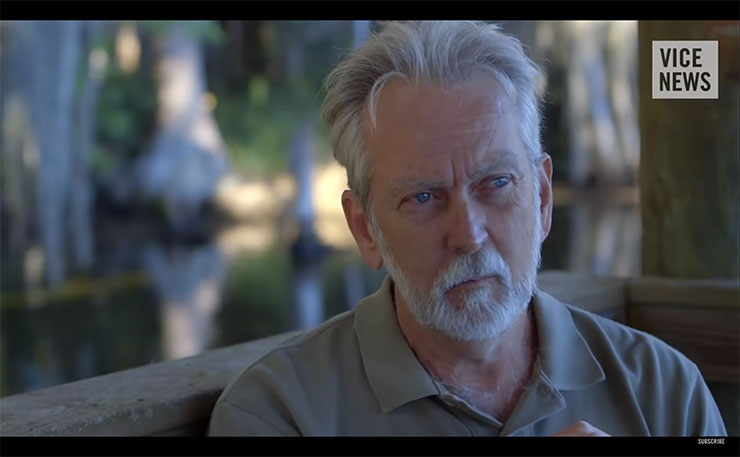
The program’s targets were kidnapped without due process, often based on fabricated, single-source information according to the SIC (i.e. dodgy leads), and detained indefinitely without trial. Some are still being held today, having never been charged or tried. For anything. At all.
Much as Julian Assange is still being arbitrarily detained today, having never been charged with anything. At all.
Under the psychologists’ leadership, victims of the torture program suffered “porno-sadistic depravity” that was “gruesome beyond imagination”.
Why? To gain important information on critical terror threats post 9-11 perhaps? Desperate measures for desperate times?
Except that by then the CIA had known since the 1980s that torture does “not produce intelligence”. What it does produce is false information. Which is not to be sneezed at, as it happens.
According to former senior officials, a tortured false confession was pivotal to Colin Powell’s infamous UN speech pressing for the Iraq War, unbeknownst to Powell at the time. CIA director George Tenet and MI6, however, did apparently have an inkling.
So, with a War on Terror to wage, and false confessions to be gained, psychologists Mitchell and Jessen set to work designing a torture program.
Along with traditional forms of state brutality such as slamming people’s heads against walls and stringing them up naked, the pair’s combined psychological creativity spawned such innovations as: rectally force feeding victims with hummus, pasta and nuts; sexually assaulting them with broomsticks; locking them in boxes of insects; threatening to harm their children and slit their mothers throats, or rape their mothers in front of them.
The pair’s combined psychological creativity spawned such innovations as: rectally force feeding victims with hummus, pasta and nuts; sexually assaulting them with broomsticks; locking them in boxes of insects; threatening to harm their children and slit their mothers throats, or rape their mothers in front of them.
In order to heighten their victims’ susceptibility to distress, subjects were often marinated in savage ordeals of sleep deprivation first, for up to several days at a time.
At least 26 of the program’s targets were ultimately determined to have been innocent. One man, apprehended in a case of mistaken identity, snatched from his wife and four children on the way to a medical check-up, died. Many suffered lasting injuries such as prolapsed bowels, brain damage and seizures. All were psychologically decimated, as intended.
On the status of one survivor, torture expert and Associate Professor Dr Sandra Crosby reported, “In my many years of experience treating torture victims from around the world, Mr. Al-Nashiri presents as one of the most severely traumatized individuals I have ever seen.”
Behind closed doors
What has all this got to do with Wikileaks and Julian Asssange? A few things. First, it is an example of the sensitive, clandestine, real-world CIA psychology deployed against ‘terrorists’ and enemies of the state, as Julian Assange and Wikileaks have been branded.
Second, it illustrates the kinds of activities that even the most reputable, respected and trusted of authorities, such as the American Psychological Association, can get up to in the absence of transparency and public oversight, such as that provided by Wikileaks.
Third, it is a case study in state secrets, the likes of which we are told we must protect by sacrificing our liberties, including the free speech liberties embodied by Wikileaks.
Fourth, it is a cautionary tale in the modus operandi of the CIA, which has recently come out openly in front of the US mission to take down Wikileaks and Julian Assange.
And fifth, it is an example of the importance of whistleblowing, and what happens to whistleblowers who are not protected by an organisation such as Wikileaks.
Psychologists Mitchell and Jessen’s labyrinth of physical and mental cruelty was exposed after ex-CIA officer John Kiriakou went on TV in 2007 and contradicted then president George W. Bush. Bush had denied the existence of a torture program in response to reports by human rights organisations.
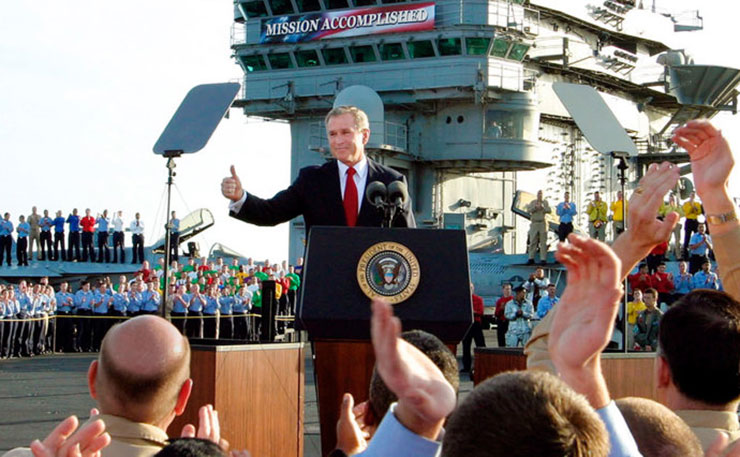
“This government does not torture people,” Bush had pronounced. “We stick to US law and our international obligations.”
“I knew that was a lie” recalls Kiriakou.
During a subsequent television interview with ABC’s Brian Ross, John Kiriakou explained that waterboarding was indeed CIA policy. “In that interview, I essentially called the president of the United States a liar” Kiriakou explains. “I had become the first CIA officer, current or former, to actually confirm that we were torturing prisoners and that torture was our policy.”
Following Kiriakou’s revelations, the Senate Intelligence Committee launched its exhaustive investigation, culminating in the extensive 2014 report, which left “no doubt”, writes the World Socialist Website, “that CIA agents, in close collaboration with licensed psychologists, committed torture, murder, and war crimes”.
A later 2015 report commissioned by the American Psychological Association board of directors revealed that “the APA colluded in secret with the CIA and Department of Defense (DoD) to implement the torture program”.
To hide its national security perversions, “the CIA repeatedly provided inaccurate information to the Department of Justice (DoJ), impeding a proper legal analysis of the CIA’s Detention and Interrogation Program,” wrote the SIC. In other words, they lied to cover it up. Why wouldn’t they? They’re the CIA. Covert, clandestine activity is their game. Besides, how else are state secrets to be kept?
Despite the CIA’s secrets being blown wide open on this particular occasion, and despite the CIA and APA being caught with their legal pants well and truly down in sadistic secret black sites, it was John Kiriakou – the whistleblower – who went to jail. The perpetrators, in contrast, went free.
As a result, other prospective whistleblowers are likely to think twice before following in Kiriakou’s footsteps and exposing any nefarious psychological activity at the CIA. Which means that those of us on the outside can only speculate as to what else CIA psychologists might be getting up to behind closed doors.
Being a psychologist with a PhD in a relevant field myself, however, I am willing to hazard a guess.
A contemporary real-world situation bearing the hallmarks of an arsenal of psychological knowledge is the decade-long psychological war being waged against the leading whistleblower protectors of our time: Wikileaks and Julian Assange.
Trust, vulnerability and the Cyber Counter-intelligence Assessment Branch of the US Defense Department
At last year’s Sydney rally to free Julian Assange, John Pilger said of the 2008 Cyber Counterintelligence offensive against Wikileaks, “It was as if they planned a war on a single human being, and on the very principle of freedom of speech. Their main weapon would be personal smear. Their shock troops would be enlisted in the media.”
If that sounds far-fetched, it is worth taking a moment to briefly trace the history of psychological operations in US intelligence.
Going back to the CIA’s founding days, psychology and psychological operations appear to have been woven into the DNA of US intelligence. As long ago as 1954, when the CIA was just seven-years-old, President Eisenhower commissioned a review, called the Doolittle Report, to assess the state of the agency and offer guidance going forward. The report concluded that the CIA must become “an aggressive covert psychological, political and paramilitary organization… more ruthless than that employed by the enemy”.
An aggressive covert psychological, political and paramilitary organisation. In that order.
By the 1980’s psychological operations were well established for use against foreign populations during wartime. Under Ronald Regan, however, their use was bureaucratised and expanded to target domestic populations also, in times of both war and peace. To facilitate this, Regan’s administration established an inter-agency Psychological Operations Committee (POC), whose aim was to create a “coherent, worldwide psychological operations strategy”, using psyops as a “weapons system” both at home and abroad, in peacetime and in war.
By 1996, according to a thesis submitted to the Naval War College under the direction of the Chairman of Joint Military Operations, the US Army alone boasted 24 psyops teams, some of which went on to develop units called “Media Dissemination Battalions”. The 1996 thesis argued, among other things, for an increased use of psyops in ‘Military Operations Other than War’ (MOOTW), including a greater role as a “political and domestic tool”.
Seven years later, in 2003, the JCOS wrote that psychological operations were by then “a vital part of the broad range of US diplomatic, informational, military and economic activities”.
Little wonder, then, that by 2017 a Sonoma State University paper reported that upwards of 80 percent of mainstream media content emanates from Propaganda and Public Relations firms, among whose major clients are the Pentagon and the US military. This has spawned what the authors term a ‘military-industrial-media complex’.
In a 2018 book chapter, Piers Robinson, Chair in Politics, Society and Political Journalism at The University of Sheffield added that “the production of propaganda involves more than government and corporation ‘spin doctors’ and ‘PR’ agents, it also involves a variety of entities, including think tanks, NGOs, and even academia. It also involves actors from within the so-called ‘deep state’ including the intelligence services”.
All up, it sounds as though there is plenty of work for psychologists willing to get their hands dirty in a military-intelligence propaganda psyop or two. No wonder the CIA keeps advertising for psychologists.
Which is one reason, but not the only reason, to speculate psychological involvement in the decade-long counterintelligence offensive against Julian Assange and Wikileaks. My main reason for hazarding such a guess, however, is that my own PhD concerned the psychological processes by which one person influences another’s beliefs about reality.
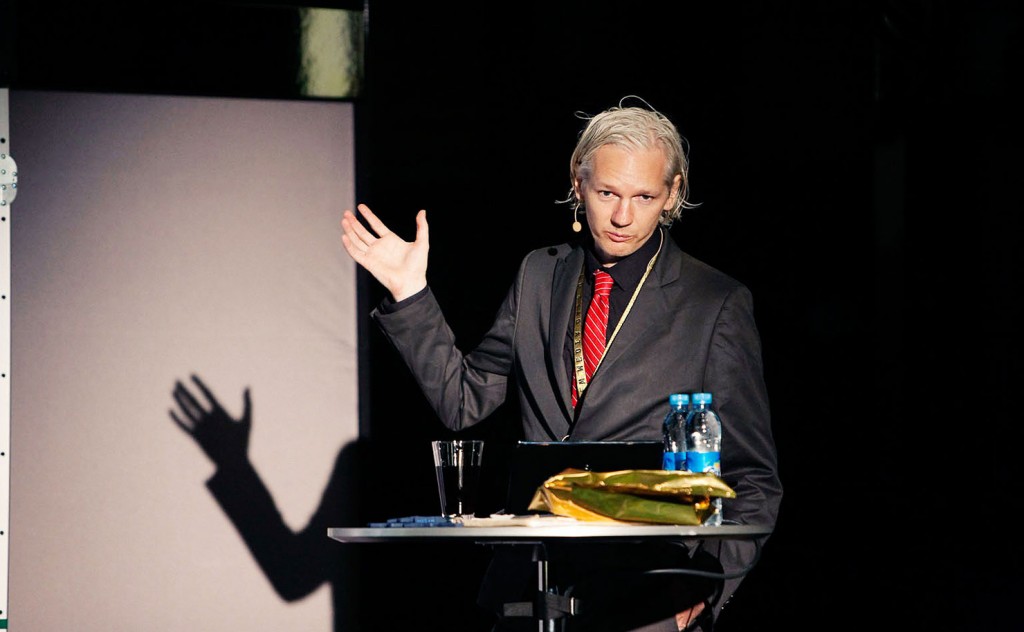
As a result, I am familiar with the large body of psychological literature concerning the human reality-attribution system, its vulnerabilities, and the ways in which those vulnerabilities can be exploited and manipulated.
True to the modus operandi of counterintelligence, which, according to the CIA website, seeks to “leverage insights” into adversary “vulnerabilities”, every major vulnerability in the human reality-processing system has been leveraged and exploited in order to smear Julian Assange and Wikileaks since the DoD launched its war on the publisher, and on the principle of freedom of speech, in 2008.
In this case, the adversary in the US crosshairs has been not only Julian Assange and Wikileaks, but the global populations that Wikileaks seeks to inform. It is our own vulnerabilities – the vulnerabilities in the information processing systems of all human beings – that have been leveraged and exploited in order to undermine and discredit Wikileaks.
And while we will likely never know whether the war on Wikileaks had its own ‘Mitchell and Jessen’ behind the scenes, the field of psychology certainly holds a great deal to offer a smear campaign such as that waged against Julian Assange in 2008. In fact, the Cyber Counterintelligence branch would have needed all the psychological help it could get back then.
It is a tall order, psychologically, to turn the tide of world opinion against an organisation that boasts “trust” as its “centre of gravity”. The task becomes even trickier when that organisation is known for its scrupulous honesty, having only ever published the truth. Truth, moreover, that has exposed the lethal criminality, lies and corruption of the very people and institutions seeking to promote the smears.
What is needed in such a situation is to turn reality on its head. The fundamental psychological task is to render truth suspicious and deceit reassuring, war criminals virtuous and their critics corrupt, pacifism threatening and violence comforting, abuse of power righteous and resistance reprobate, torture forgivable and whistleblowing a crime, censorship a bastion of democracy and free speech a menace to be overcome. Much as George Orwell foresaw.
Going after whistleblowers, going after journalism
In order to justify the psychological war on Wikileaks, US powerbrokers have branded Wikileaks and Assange “anti-American” “terrorists”, a “non-state hostile intelligence service” and “enemy combatants”. Bolstered by these factually indefensible slurs, Julian Assange now faces imminent extradition to the United States to face secret charges, most likely for 2010 scoops exposing US war crimes in Iraq and Afghanistan.
Despite the hysterical American rhetoric rationalising this extraterritorial persecution, in 2017 a UK tribunal ruled upon what Wikileaks really is: a media organisation.
It is a media organisation, moreover, that serves as the world’s leading mechanism for anonymous, public interest leaking, or whistleblowing. And anonymous whistleblowing, according to numerous authorities and experts, sits not only at the heart of real journalism, but of democracy.
Why anonymous? Why must Wikileaks protect its sources so fiercely, making Wikileaks look to some, superficially at least, a little like the spy agencies pursuing it? Why all that encryption and identity-protection and the like?
Effective whistleblowing, such as John Kiriakou’s, typically requires publicity and media attention to achieve change, explains Emeritus Professor of Social Sciences Brian Martin. Private, poorly publicised whistleblowing, such as complaints through official channels, Martin says, typically goes nowhere and/or blows up in the whistleblower’s face.
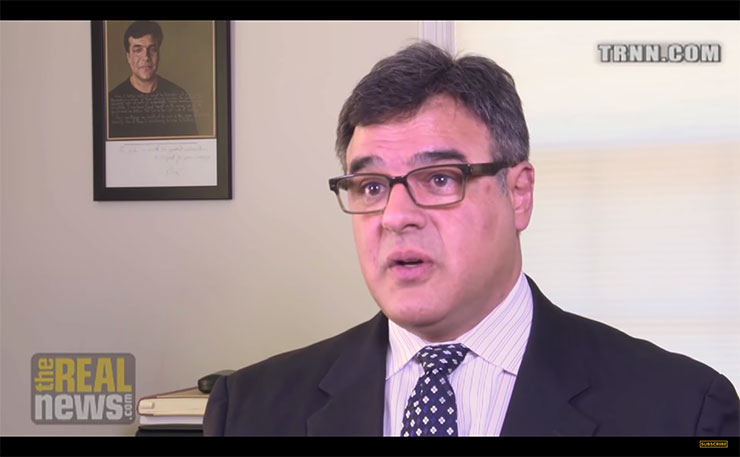
The price for such public whistleblowing, however, as John Kiriakou’s case illustrates, is that the whistleblower is open to retribution, whistleblower protection legislation and all.
The reality of whistleblowing, according to Professor Martin, is that legislation designed to protect whistleblowers is either “useless or harmful” in practice. Accordingly, “anonymous whistleblowing”, such as via Wikileaks, serves a critical democratic function in that it affords the public interest benefits of public whistleblowing, for instance exposing torture, while maintaining “the great advantage of avoiding reprisals”.
Wikileaks, for example, has published all manner of waste, fraud and abuse while protecting whistleblower sources, including on the TPP, UN vote-trading between Saudi Arabia and the UK, NSA spying on world leaders, the extent of US support for the genocidal war on Yemen, torture at Guantanamo, international and environmental abuses by oil and mining companies, a raft of nuclear issues, the rape and plunder of Haiti and, the last straw, Vault 7 – the CIA’s cyber tools for spying on us. Through our Smart TVs. When the TVs are turned off.
(Hilary Clinton might believe otherwise, but it’s not all about her).
As the CEO of the Media Entertainment and Arts Alliance (MEAA) wrote in a 2015 report Going After Whistleblowers, Going After Journalism, “If the identity of whistleblowers can be revealed then that has a chilling effect on public interest journalism…. Public interest journalism relies on whistleblowers, the confidential sources that provide crucial information to journalists.” Without them “we all lose”, the report says, and unchecked power gets away with murder.
Don’t look back
The US government defines whistleblowing as the exposure of “waste, fraud and abuse”. After John Kiriakou exposed the CIA’s wasteful, fraudulent and abusive torture program in 2007, the program was brought to an end, in 2009. Such is the utility of successful whistleblowing.
In Wikileaks’ words, “transparency in government activities leads to reduced corruption, better government, and stronger democracies”.
The Australian Human Rights Law Centre made a similar point in a 2016 document titled Safeguarding Democracy. The document reads, “For our democracy to thrive, we need free speech, the free flow of information and a free press to hold government accountable…. We need institutions, organisations and practices to prevent and expose misconduct and abuse of power… these are not only our human rights but they are vital preconditions to the health and prosperity of our democracy.”
The Centre warns, however, that “there is a clear and disturbing trend of new laws and practices eroding many of these foundations,” including authorities responding “to whistleblowers with increasingly aggressive reprisals.”
For his part in defending American democracy, for instance, John Kiriakou notes that “the CIA never forgave me”.
Following his ABC interview confirming the use of torture by the Bush Administration, Kiriakou was targeted by the CIA over the course of several years and sent to prison in 2013, where he served 23 months of a two and a half year sentence. This despite US Whistleblower Protection legislation prohibiting retaliation against whistleblowers.
Kiriakou was also forced to spend over one million dollars of his own money defending himself against the 45-year sentence sought by the CIA.
“I’m going to have to work till the day I die,” he recently reflected. “There’s nothing I can do about it.”
The two psychologists who designed the CIA’s torture program, in contrast, Jim Mitchell and Bruce Jessen, got off scot free.
While a few heads rolled at the APA in response to pressure from member groups, and APA policy was revised, none of the torture perpetrators suffered any criminal repercussions. Instead, Mitchell and Jessen’s consulting firm received over $81 million in payments from the CIA.
In return their program had delivered no “accurate intelligence” according to the SIC report. Nothing.
What the psychologists did deliver, predictably, was “fabricated information on critical intelligence issues, including the terrorist threats which the CIA identified as its highest priorities.” In short, false information. As was to be expected.
Waste. Fraud. Abuse.
The CIA also paid an undisclosed sum in legal fees for the pair, including a financial settlement with the family of the man their program had killed, leaving the psychologists to walk free.
Free enough, as it happens, to appear on TV in 2018 defending torture, and endorsing their fellow torture-overseer, Gina Haspel, as CIA director.
While Chief of Base at a black site in Thailand, Haspel had supervised the stomach-turning implementation of Mitchell and Jessen’s torture program. She also later drafted a cable ordering the destruction of 92 incriminating videotapes.
Her punishment? Promotion to CIA head. The same CIA that is currently targeting Wikileaks with a vengeance.
Sure, “we tortured some folks” Barack Obama blithely conceded. But those intelligence personnel, like Haspel, had it tough. Don’t be “sanctimonious”. It’s all in the past. “We need to look forward as opposed to looking backwards”. Why prosecute?
Unless, of course, you exposed the torture rather than perpetrated it.
Had John Kiriakou, unprotected by the anonymity of Wikileaks, not put himself on the line, suffered financial ruin and been forced to watch the release of the SIC report from prison, the six million torture-related documents reviewed by the SIC, including CIA cables, emails and internal memos, may never have seen the light of day.
The torture program may never have been closed in 2009. Innocent people may have continued being whisked away to suffer secret horrors in secret black sites around the world, all in the name of procuring false information.
Much as Julian Assange faces being whisked away to suffer secret horrors under secret charges in a secret indictment issued by a secretive US Grand Jury, also in the name of false information. Specifically, in the name of protecting false information from accurate information.
Like protecting lies about the civilian death toll in Iraq and Afghanistan from the actual body counts exposed by Wikileaks.
Protecting falsehoods in this way, as any student of political theory will know, is a cornerstone of democracy. Democracy is all about suppressing information. Keeping populations in the dark. Concealing the truth.
Especially at election time, like in 2016. Or during war time, which is all the time. Wherever costly, carefully crafted election campaigns and pro-war narratives are at stake.
Throwing influential publishers under the bus for exposing the truth about such things, and silencing the whistleblowers behind them, is the only way to keep the whole ‘democracy’ show on the road.
Torturers like Mitchell and Jessen should be free to spend their $81 million in taxpayer money as they please, while courageous whistleblowers such as John Kiriakou should be bankrupted and thrown in jail. It’s only fair.
Wikileaks stands in the way of all that.
Which is why the Russiagate #Resistance™ ‘countering disinformation’ crowd is going after Julian Assange so hard. That, and Wikilkeaks’ record of 100% accuracy. Which counts as ‘disinformation’ these days.
It all makes perfect sense. No psychological influence operation at work there. No-one with any psychological expertise whatsoever has worked in any way to turn reality-perception upside down. No. Not a bit.
Peace is bad. War is good. Truth is dangerous. Censorship will set you free. These are the positions underpinning the war on Wikileaks.
In my next article in this series, before delving into the specific psychological tactics that appear to have been deployed in the psychological offensive against Julian Assange and Wikileaks, I will run through some of the misconceptions that this psychological war has purveyed, and what is ultimately at stake should it succeed.
Meanwhile, if you would like to do your part to protect whistleblowers and public interest journalism, you can spread the word about the Australian rallies in defence of Julian Asssange, to be held in Sydney at the Martin Place Amphitheatre on March 3rd from 2pm, and in Melbourne at the State Library on March 10th from 1pm. Keep an eye on this Twitter feed or this Facebook page for updates.
The rallies will no doubt be subject to the same media blackout as the Sydney rally in June last year, and will need your help.
READ THE WHOLE ASSANGE SERIES
PART 1: The Psychology Of Getting Julian Assange: What’s Torture Got To Do With It?
PART 2: The Psychology Of Getting Julian Assange: The Court Of Public Opinion And The Blood-Curdling Untold Story
PART 3: The Psychology of Getting Julian Assange – Wikileaks and Russiagate: Trust Us, We’re The CIA
PART 4: The Psychology Of Getting Julian Assange: Why Even Some Lefties Want To See Him Hang
PART 5: The Psychology Of Getting Julian Assange: War Propaganda 101
DON’T MISS ANYTHING! ONE CLICK TO GET NEW MATILDA DELIVERED DIRECT TO YOUR INBOX, FREE!
Donate To New Matilda
New Matilda is a small, independent media outlet. We survive through reader contributions, and never losing a lawsuit. If you got something from this article, giving something back helps us to continue speaking truth to power. Every little bit counts.

